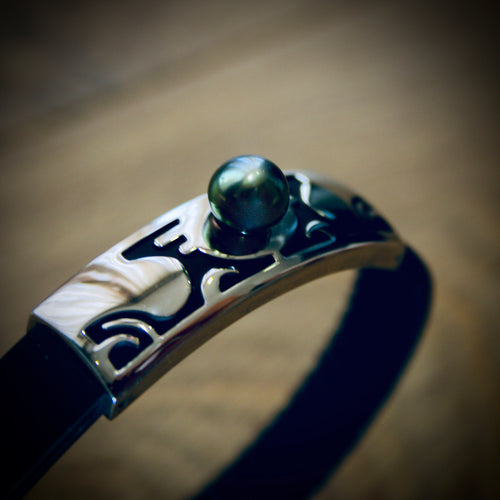Pearl Buying Guide
Acquiring a Tahitian pearl is like finding the right perfume or the right wine. It is a very intimate and personal process. As each pearl is unique, it will look different depending on who is wearing it. While selecting pearls, there are several criteria to consider. At Tahiti Pearl Market, being pearl farmers really helped us with the knowledge of classifying our own pearls, and we have put together a pearl buying guide to help you do your selection.
The basic characteristics to consider are the shape of the pearl, the surface quality, the color of the body and its overtones and the size.
- The shape:
Tahitian pearls come in a variety of shapes going from the most classic shapes such as the round, drop and semi-round (aka near round) to the neo-classic shapes such as the button and oval shapes to the baroque shapes such as the baroque, semi baroque and finally the circled pearls or ringed pearls.
- The surface quality:
As a product of nature, cultured pearls are always subject to imperfections. These imperfections on its surface might be spots, grooves, pin pricks or blisters which are more or less visible. Depending on the quantity and the position of these imperfections, they are classified in 4 categories:
- AAA+ quality: no imperfection on the surface
- AAA quality: few imperfections located on 3% to 5% of the surface
- AA quality: several imperfections located on 6% to 20% of the surface
- A quality: several imperfections located on 21% to 60% of the surface.
- A- quality: significant imperfections located on more than 60% of the surface.
- The color of the body and its overtones:
Compared to other pearls produced around the world that are usually white, Tahitian cultured pearls offer an extremely wide variety of colors.
Often mislabeled in the past as "black pearl" which is short for "Black Lip Oyster Pearl", they can often be bronze, aubergine, steel grey, blue, pastel or peacock color. Peacock is the color that is the most sought after, a body color of Pink with green overtones and a slight hint of blue that reminds us of peacock feathers. Tahitian pearls have natural colors, which means that they have not undergone any color treatment such as bleaching or dying. For this reason the color of a Tahitian pearl can be very complex hence giving it its unique personality. For this matter, Tahiti Pearl Market has organized 5 categories of colors:
- Dark: very dark colors, almost black body color with some overtones.
- Light: very light color pearls going from a silvery white to creamy white.
- Grey: from light grey to dark grey.
- Multicolor: this category has the most vibrant colors going from green to pink to blue with amazing color combination such as the peacock or the rainbow color found in our Rainbow pearl collection.
- Pastel: this category has pastel colors like watercolor -- very subtle green, pink or blue.
- The size of a pearl:
Pearl sizes are measured in millimeters by an instrument called palmer or a pearl gauge. For pearls of high value that are not perfectly round their minimum and maximum size is indicated within a 100th of a millimeter. The size of Tahitian cultured pearls are usually between 7mm and 14mm, the pearls that are larger than 15mm are extremely rare, but the truly exceptional ones can reach 20 mm. To this day the largest cultured pearl harvested is one of 23mm! In 2005, we harvested a 19mm pearl during the first graft, which is extremely rare, knowing that these kinds of pearls are harvested after the 3rd graft. It is nowadays displayed in our Bora Bora store.
-
The top gem pearls:
These pearls are perfect, showing an excellent surface quality and without any blemishes; extremely rare, their value is very high. -
The low quality pearls:
The quality of these pearls doesn't match any of the minimum criteria needed to enter the A- quality or they don't have the required nacre thickness on more than 20% of the surface; therefore, they are forbidden to be legally sold and exported out of French Polynesia.
-
The luster:
A concept quite difficult to grasp, the luster results from the refraction of the light on the surface of the pearl, giving it a shining look. -
The orient:
This orient is a little more complex to define compared to the luster, it is the result of the refraction of the light as well but not on the surface of the pearl but through the layers of the pearls; the light is then refracted through the crystals composing the layers and the light seems to glow from the inside of the pearl.

